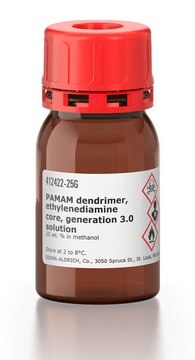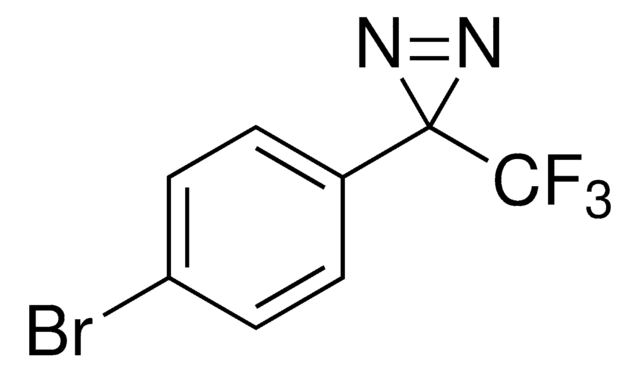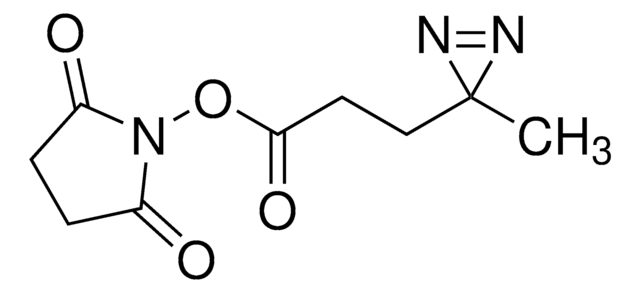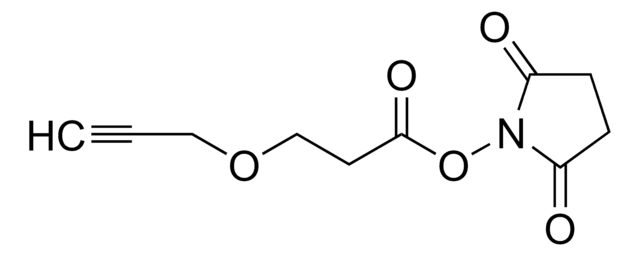803499
PEG4-SPDP (PEGylated, long-chain SPDP crosslinker)
Synonym(s):
2,5-Dioxo-1-pyrrolidinyl 17-oxo-19-(2-pyridinyldithio)-4,7,10,13-tetraoxa-16-azanonadecanoate
About This Item
Recommended Products
form
oil
Quality Level
mol wt
559.65
reaction suitability
reagent type: cross-linking reagent
storage condition
desiccated
solubility
water: soluble
functional group
NHS ester
shipped in
ambient
storage temp.
−20°C
SMILES string
O=C(CCSSC1=CC=CC=N1)NCCOCCOCCOCCOCCC(ON2C(CCC2=O)=O)=O
Related Categories
General description
Features and Benefits
- Reactive groups: NHS ester and pyrirdyldithiol
- Efficient amine conjugation—NHS ester provides effective conjugation to lysines, N-termini of peptides and other primary amines
- Reversible sulfhydryl conjugation—pyridyldithiol group enables disulfide linkage with reduced cysteines and other sulfhydryl groups, providing a stable but cleavable bond
- Polyethylene glycol—PEG groups are flexible, non-immunogenic, hydrophilic, and often enhance the solubility of attached molecules
- Spacer arm—connects primary amines and sulfhydryl targets at distances up to 25.7 angstroms; compare to PEG12-SPDP (54.1 angstroms)
Caution
Storage Class Code
11 - Combustible Solids
WGK
WGK 3
Flash Point(F)
Not applicable
Flash Point(C)
Not applicable
Certificates of Analysis (COA)
Search for Certificates of Analysis (COA) by entering the products Lot/Batch Number. Lot and Batch Numbers can be found on a product’s label following the words ‘Lot’ or ‘Batch’.
Already Own This Product?
Find documentation for the products that you have recently purchased in the Document Library.
Customers Also Viewed
Our team of scientists has experience in all areas of research including Life Science, Material Science, Chemical Synthesis, Chromatography, Analytical and many others.
Contact Technical Service











